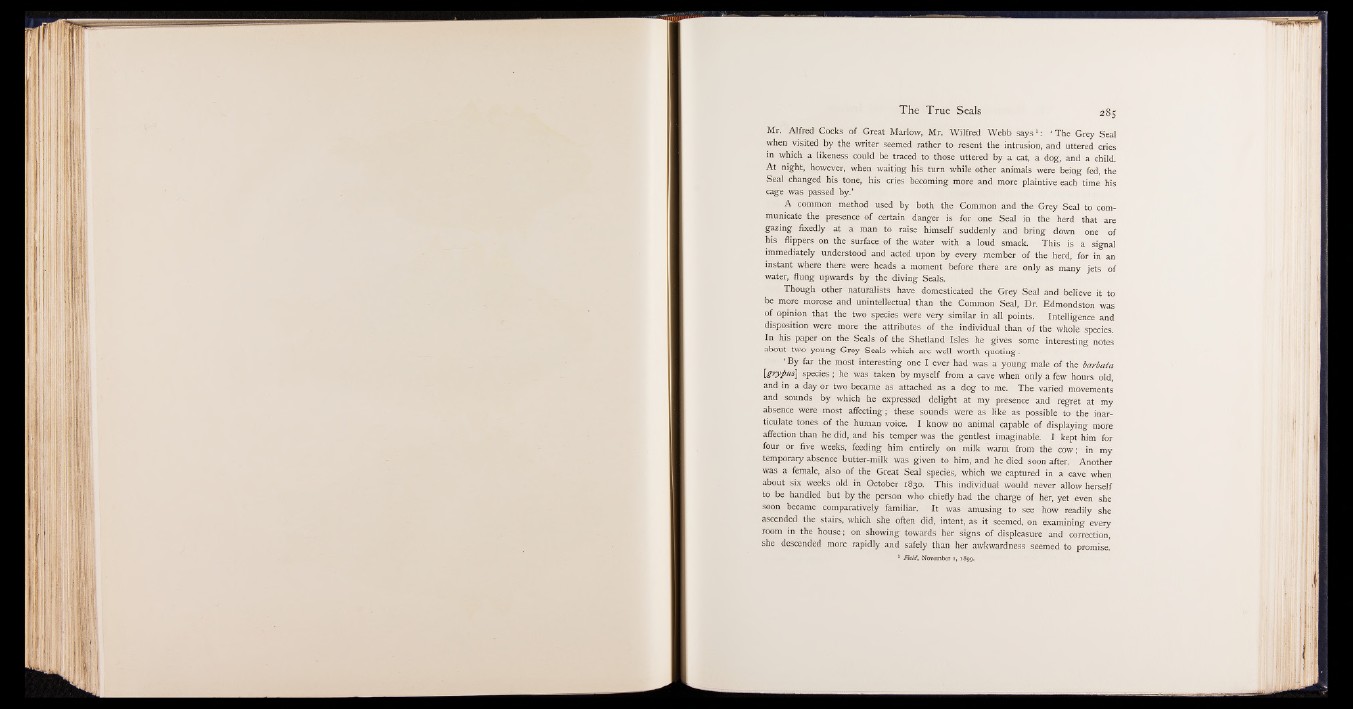
The True Seals 285
Mr. Alfred Cocks of Great Marlow, Mr. Wilfred Webb says1 : ‘ The Grey Seal
when visited by the writer seemed rather to resent the intrusion, and uttered cries
in which a likeness could be traced to those uttered by a cat, a dog, and a child.
At night, however, when waiting his turn while other animals were being fed, the
Seal changed his tone, his cries becoming more and more plaintive each time his
cage -was passed by.’
A common method used by both the Common and the Grey Seal to communicate
the presence of certain danger is for one Seal in the herd that are
gazing fixedly at a man to raise himself suddenly and bring down one of
his flippers on the surface of the water with a loud smack. This is a signal
immediately understood and acted upon by every member of the herd, for in an
instant where there were heads a moment before there are only as many jets of
water, flung upwards by the diving Seals.
Though other naturalists have domesticated the Grey Seal and believe it to
be more morose and unintellectual than the Common Seal, Dr. Edmondston was
of opinion that the two species were very similar in all points. Intelligence and
disposition were more the attributes of the individual than of the whole species.
In his paper on the Seals of the Shetland Isles he gives some interesting notes
about two young Grey Seals which are well worth quoting:
‘ By far the most interesting one I ever had was a young male of the barbata
[grypus] species ; he was taken by myself from a cave when only a few hours old,
and in a day or two became as attached as a dog to me. The varied movements
and sounds by which he expressed delight at my presence and regret at my
absence were most affecting; these sounds were as like as possible to the inarticulate
tones of the human voice. I know no animal capable of displaying more
affection than he did, and his temper was the gentlest imaginable. I kept him for
four or five weeks, feeding him entirely on milk warm from the cow; in my
temporary absence butter-milk was given to him, and he died soon after. Another
was a female, also of the Great Seal species, which we captured in a cave when
about six weeks old in October 1830. This individual would never allow herself
to be handled but by the person who chiefly had the charge of her, yet even she
soon became comparatively familiar. It was amusing to see how readily she
ascended the stairs, which she often did, intent, as it seemed, on examining every
room in the house; on showing towards her signs of displeasure and correction,
she descended more rapidly and safely than her awkwardness seemed to promise.
1 Field, November i, 1899.